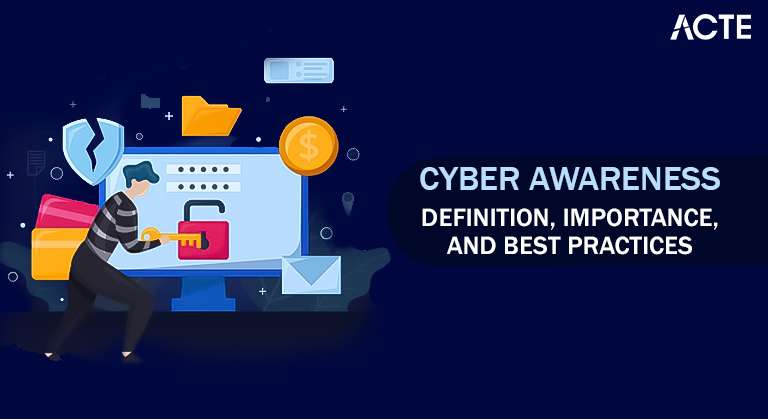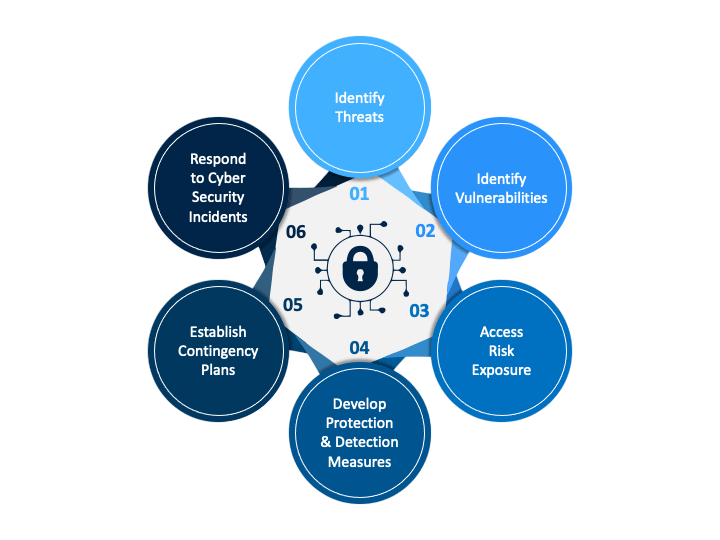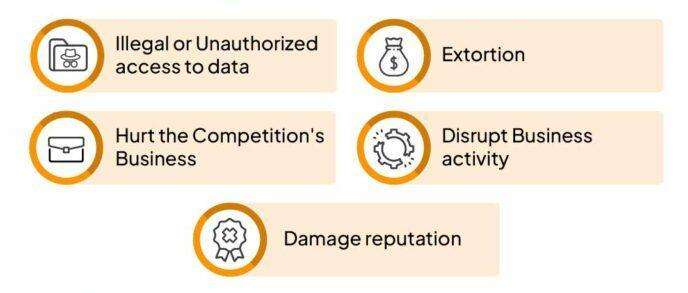
- What is Cyber Awareness?
- Best practices for the improvement of cyber awareness
- Common cyber threats
- Importance of Cyber Awareness
- Implementation of a cyber-aware culture in organizations
- Conclusion
As more people live in a digitized world, cyberawareness is an important network security component for individuals and organizations. With new cyber security threats surfacing constantly, knowledge of the dangers and the implementation of best practices in Web Application Security can ensure that private information remains secure. This blog post will explore cyber awareness, its importance, typical threats, best practices, and education to create a safer internet.
Are You Interested in Learning More About Cyber awareness? Sign Up For Our Cyber Security Online Training Today!
What is Cyber Awareness?
Cyber awareness refers to understanding the risks of using technology and the internet. It includes knowledge about the kinds of cyber threats and how one can reduce those risks. Cyber Security Training Courses are needed by IT professionals and anyone who uses technology in both personal and professional life. Cyber Awareness is from safe online behavior, data privacy, and suspicious activity recognition. It makes a person and their organization lower the chances of becoming victims of cyber attacks.

Cyber security awareness will be crucial in developing an organization’s proactive security culture. Knowing how threats come about and how one could mitigate them puts them on the ‘hot seat’ as informed agents in the security affairs within their organization. Mass awareness increases vigilance over a general security posture and enfranchises employees so they are well-informed in any matter concerning online behavior and make informed decisions on security measures. This way, by cyber-awareness training and open communication regarding security concerns, organizations can create an environment that makes everyone responsible for safeguarding sensitive information, thus reducing the risk of breaches and fostering a safer digital landscape.
Best practices for the improvement of Cyber Awareness
- Education and Training: It could ensure proper knowledge about the latest types of threats in cyberspace and up-to-date, safe best practices in general. Simulated phishing may be very instrumental and help show clearly and with personal experience how susceptible anyone might be to phishing and eventual attacks.
- Sound Password Management:Complex passwords and regular updates greatly improve security, especially in the context of the Internet of Things. As IoT devices become more prevalent, ensuring that each device is protected with strong passwords and kept up to date is crucial in preventing unauthorized access and reducing the risk of cyberattacks.
- Safe Browsing Habits: Educating the user with good surfing habits also occurs. The act here includes not opening weird and suspicious links. Email confirmation should be verified when surfing to click it through so that it opens safe files.
- Update for Your Software Regularly: Cybercrooks often target old software. Regularly updating the operating system, applications, and antivirus helps prevent cyber attacks. An organization should implement a patch management policy to update in time.
- Incident Response Plans: An incident response plan ensures individuals and organizations can act rapidly when a cyber attack is perpetrated. This plan will outline what needs to be done, including who to contact, how to contain the breach, and how to recover lost data.
- Culture to be achieved in light of cyber awareness requires commitment through leadership and active participation from all employees. Here are some techniques for achieving this culture.
- They can lead the cyber awareness initiative themselves and consider cybersecurity a core value of the organization. They can dedicate resources to creating training programs, formulating a policy, and exhibiting and practicing safe practices.
- Open communication on cyber threats and security can be encouraged through resources like the Google Hacking Database. This database provides a collection of advanced search queries that can be used to identify vulnerabilities in websites and systems. Employees should have a comfort zone where they can comfortably express suspicions or raise questions about certain activities without any implications attached to them.
- Desirable behavior can be enforced by showing acknowledgment and rewarding employees with an impressive awareness of cyber threats. The acknowledgment can be individual or group regarding threats that may be present and employees undergoing cybersecurity training.
- Implementing regular assessments of cybersecurity practices would help identify areas for improvement. This could include penetration testing, vulnerability assessments, and a review of policies and procedures for updated information.
- An organization may also use external resources, such as cisco cybersecurity consultants or training providers, to improve its cyber awareness programs. Such resources offer expertise, new perspectives, and customized training solutions.
To Explore Cyber awareness in Depth, Check Out Our Comprehensive Cyber Security Online Training To Gain Insights From Our Experts!
Common Cyber Threats
The most common cyber threats involve phishing attacks. These refer to tricking individuals into revealing sensitive information by posing as trustworthy entities. This can occur through phishing emails, messages, or fake websites. Phishing can lead to unauthorized access to accounts, identity theft, and financial loss. Malware is short for malicious software. It could be a variety of dangerous programs designed to damage or exploit devices and networks. One effective way to protect against malware is Whitelisting, a security practice that allows only trusted applications to run on a system. Ransomware is a specific type of malware that encrypts the victim’s data, and access is denied until a ransom is paid. Malware and ransomware cause damage to individuals and organizations as they steal data and cause great financial loss.
Social engineering makes people surrender their confidential information. It is achieved by pretexting, baiting, or tailgating. Due to the psychological factors cybercriminals use, such tactics must be identified by people and cautious. Insiders are those threats caused by the insiders, such as the employees and contractors who unintentionally or intentionally compromise an organization’s security by data theft, negligence, or even accidental leaks. Organizations must be aware of potential insider risks and do something to mitigate them.
Importance of Cyber Awareness
Protect Personal InformationWith the threat of personal data as a cybercriminal’s prime target, Cyber Security Training Courses keeps sensitive data safe from mischievous hackers. Due to such knowledge of the potential danger, people become vigilant and use precautionary measures, like choosing good passwords and refraining from uploading personal data to any internet portal.
Are You Considering Pursuing a Cybersecurity Master’s Degree? Enroll For Cyber Security Expert Masters Program Training Course Today!
Corporate AssetsCyber Awareness is very important for businesses because it safeguards employee data, customer information, and intellectual property. A single breach can lead to a huge financial loss, reputational damage, and legal implications. Hence, organizations can reduce the risk of breaches by ensuring employees are cyber-aware.
Decrease CybercrimeThis could raise more awareness of cyber threats among people and various organizations, thus reducing the overall cases of cybercrime. People taught what to watch out for and what to do during a threat create much less conducive environments for cyber crooks to work within.

Many industries regulate data protection and privacy issues. Network Penetration Testing helps organizations avoid such regulations and penalties. By building a cyberculture, organizations can maintain trust with their customers and partners.
Building a Cyber CultureCreating a culture of cyber awareness within an organization always encourages continuous education and vigilance. Employees who feel part of a collective effort to protect their workplace tend to adopt secure practices, which might lead to policies prioritizing cybersecurity.
Are You Preparing for Cyber Security Jobs? Check Out ACTE’s Cyber Security Interview Questions and Answers to Boost Your Preparation!
Implementation of a cyber-aware culture in organizations
Conclusion
Cyber awareness should go a long way toward being ever-relevant, with the technology landscape proving that it is advanced. This thus goes as far as knowledge regarding the dangers of digital interaction and taking a step towards practicing safe behavior, all aimed at securing information and its ownership information personal to persons and that of an organization its members. All this goes a long way towards drastically minimizing the danger attributed to cyber threats associated with a given individual or institution. In other words, Cyber Awareness empowers them to take proactive measures to protect themselves or their information. More so, by being knowledgeable about all the threats and dangers but vigilant, we are further enhancing a safer community than mitigating the threats to it from cybercrime activities. Hence, Cyber Security Training Courses is no longer an exclusive or sole duty of the information and technology department. On the other hand, cyber security tools would then depend on the dedication of various parties and individuals.





